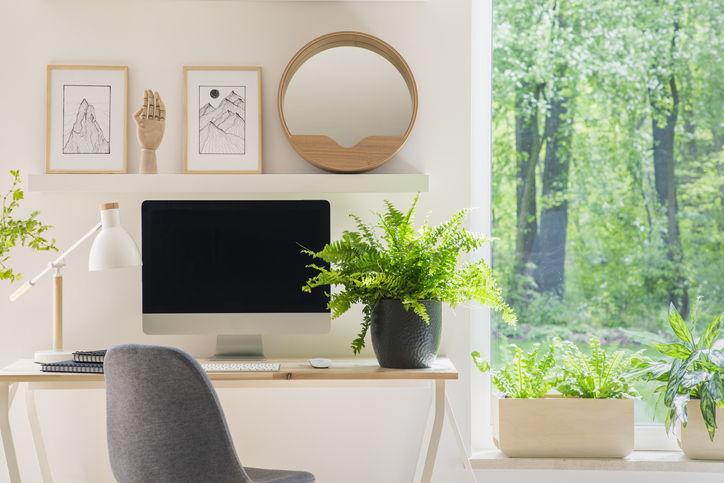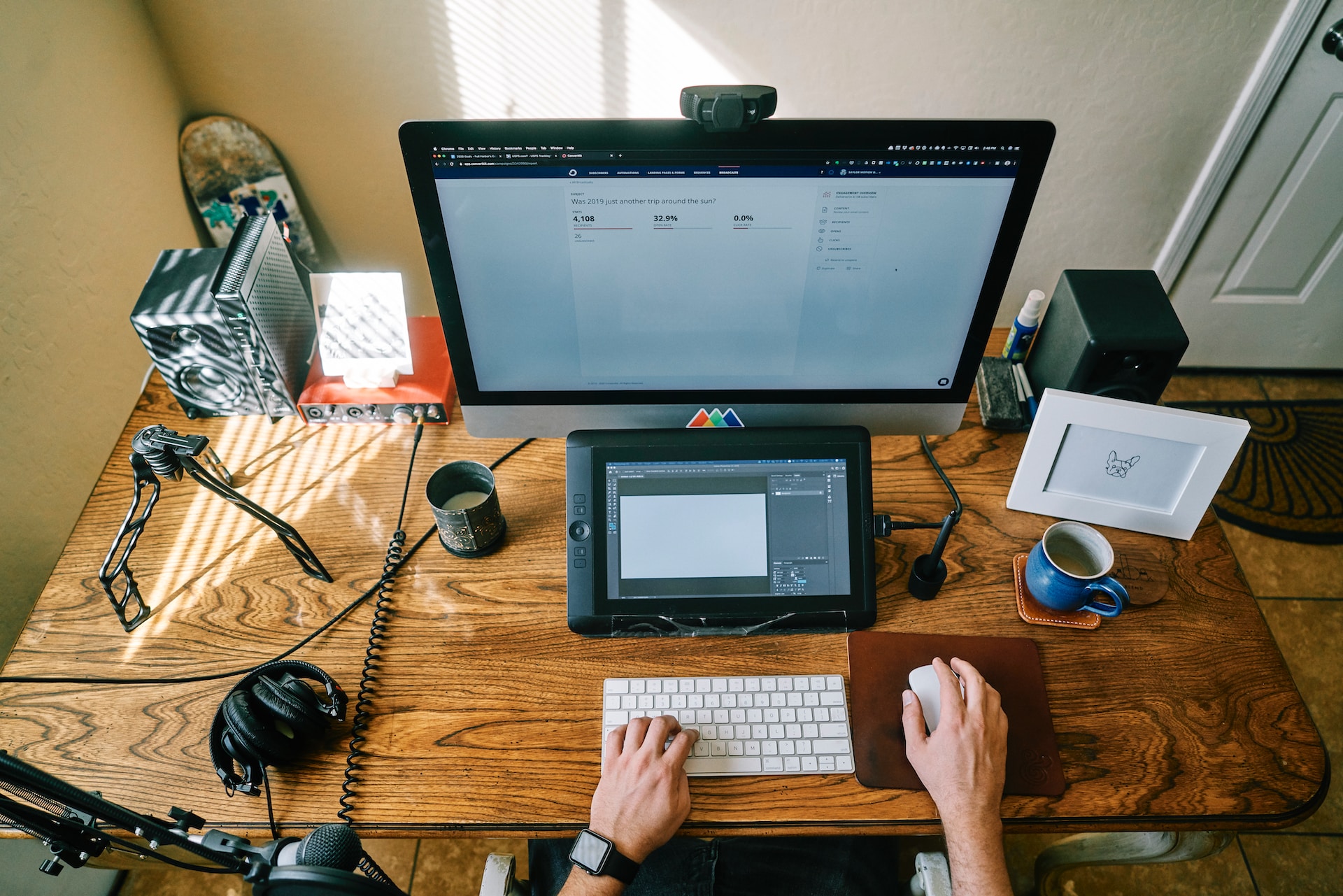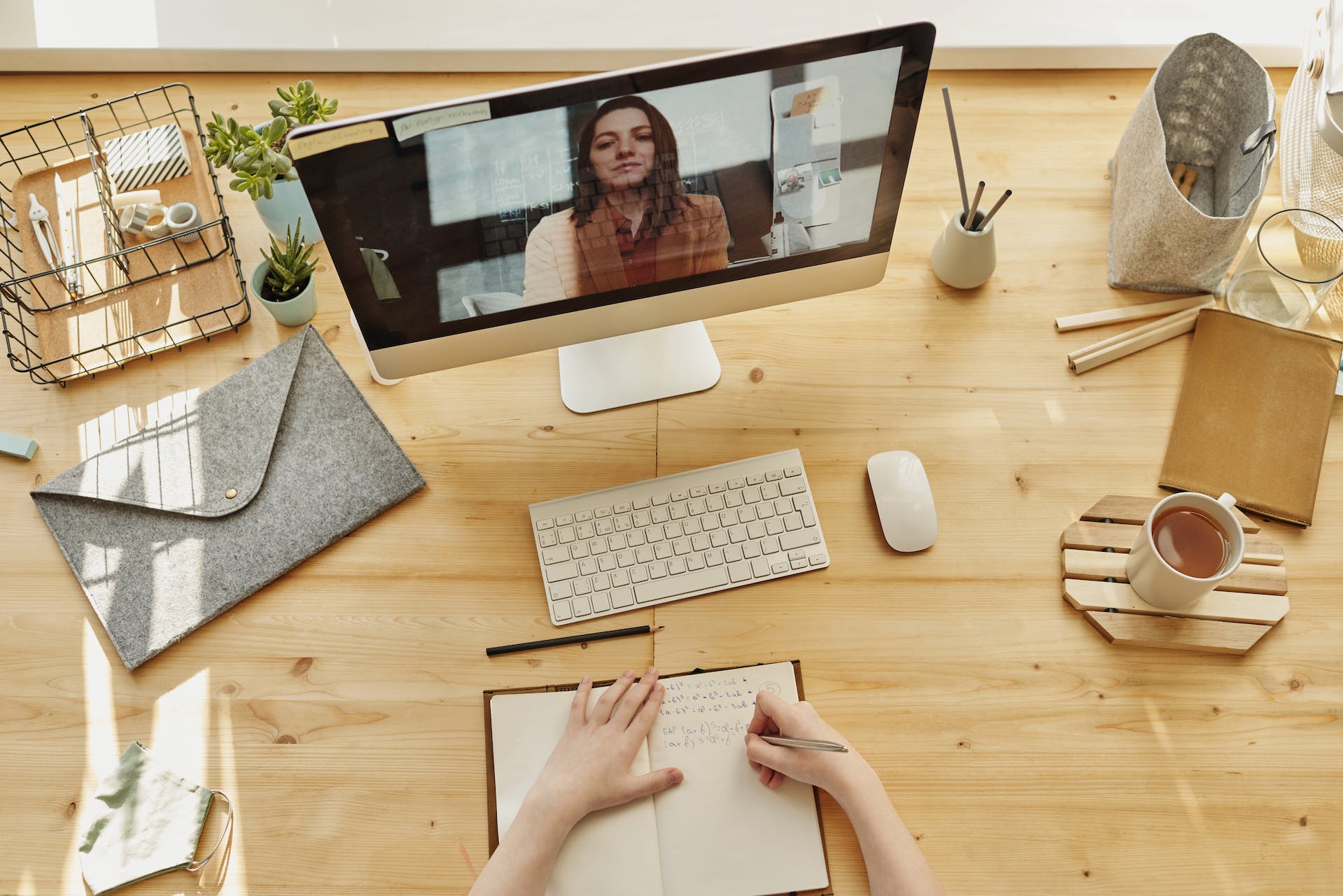If you work from home, maintaining a good balance between work and home life is a challenge. With more companies leaning toward the idea of remote work than ever before, you must have a workspace that promotes a high level of productivity. If you don’t currently have a designated home office setup in place, it’s important to select a part of your home dedicated solely for work tasks or remote learning. Read on to discover how you can transform your new home office space and make it a perfect place where you can stay on task.
The benefits of having a home office
If the idea of working from home is new to you, there are quite a few surprising benefits. Remote work is more accessible if you have a home office rather than working from your dining room or kitchen table. Here are some of the most tangible benefits that come with having your own home office:
A separate home office gives you the quiet, private area you need to get things done. Working in the living room or kitchen can be distracting, negatively impacting your ability to stay focused and productive.
Working from home can make you happier and help you work more efficiently. One two-year study found that people who work in a home office had a 13% higher productivity rate, and there was also a 50% lower rate of resignations.
If you have a home office, you won’t need to worry about sitting in traffic or being late. This cannot only save you some headaches, but it can also save you money on fuel and vehicle maintenance costs.
Working in a home office can also make you happier. A 2019 study found that people who worked from home full-time were 22% happier in their jobs than those who had to come into an office every day.
There are a few tax benefits to having a home office. If you work from home, you can claim a portion of your home as a deduction on your annual tax return. You may also be allowed to deduct the cost of new furniture and office equipment during tax time.
Overall, with the right strategies and mindset, working from home can be a fulfilling way to work and there is no need to sacrifice productivity if you establish a consistent routine and set boundaries to ensure that work does not bleed into personal time. It can also be helpful to designate a dedicated workspace and minimize distractions since communication with colleagues and managers is important to ensure that work is being completed efficiently and effectively.
Choosing the right space
When setting up your home office space, it’s important to choose an area of the home that works for your specific job requirements. Consider these home office ideas when setting up your workspace so you’ll accomplish your daily tasks more easily:
First, make sure that your home office is comfortable. If you have hardwood floors, add an area rug for a softer walking surface. Choose a room with lots of natural light, so it’s easy to see throughout the day. Offices with windows are much better than ones without since the windows won’t make it feel like you’re working from a “dungeon.” Ensure that the room you choose gets enough cool air or heat so that the temperature is comfortable, too.
Pick a part of your home that’s far away from excess noise and other distractions. If you have a spare bedroom on the opposite side of the house, this is a great choice. A room over the garage is another excellent place that you can convert into a home office that will be separated from the rest of the family.
Make sure you have ample lighting to get your job done without straining your eyes. If you don’t have a window or lots of natural light, bring in some task lighting such as a floor or table lamp.
If you don’t have the extra room to dedicate one area solely to work tasks, you can opt for a transition space instead. For example, place a small desk and an office chair in the corner of your living room or against a wall that can easily be tucked away during the weekend when you’re off-duty.
If you plan to make any modifications or additions to your home for the office, it’s important to review your home insurance policy. Many insurers require policyholders to notify them of any structural changes to the home. Failing to do so could result in denied claims if an incident occurs in the newly renovated area.
Additionally, some home offices may require a business insurance policy, especially if you meet with clients at your residence. Consult with your insurance agent to understand how your home office could impact your coverage and if you need any additional policies.
Plan your budget
Setting up a new home office shouldn’t cost too much, but there are a few things to consider when planning your budget. If your employer doesn’t provide you with computer equipment, you may need to invest in a good PC, keyboard, and mouse. For those who print a lot of paperwork, factor in the cost of a decent printer, too. Prices for printers may vary, with inkjet printers costing much less than laser printers. You’ll probably need to buy new office furniture, too. Make sure you budget enough money for a new desk and chair to give you the workspace and comfort you need. Check local thrift stores to find used desks or consider a matching office set from your local furniture store. Office furniture sets tend to cost less than buying each piece individually. If your current Internet connection is a bit slow, you may also want to upgrade your service, so it has the speed required to help you get your work done quickly.
And last but not least while being in the budget topic, project managers or members of teams take into account using resource management tools – for better workflow and projects task management.
Home office must-haves
When it comes to your home office design, there are a few items you’ll need, no matter what your job requires. These home office essentials will help you stay productive and provide you with everything you need to stay focused and on-task.
A comfortable chair is an absolute must when it comes to office furniture. Choose an office chair that will give you the proper ergonomic support and make sure it has features like an adjustable back and height to accommodate your desk. Chairs with lumbar support and armrests will ensure that you maintain a good posture while sitting at your desk.
Every office needs a quality desk, too. Look for a desk that includes built-in file storage if you work with a lot of paperwork. A desk with a hutch gives you easy access to all your accessories, and it keeps everything you need close at hand. If you mostly work on a computer and don’t print much paperwork, a sleek writing desk with a pull-out keyboard drawer should suffice.
You’ll need the proper lighting in your home office to prevent excess eye strain. A table lamp with an adjustable lamp head can give you the directional lighting you need. Switch out those old, dim overhead lightbulbs with something brighter. Stay away from fluorescent bulbs and stick to energy-efficient LED bulbs if possible.
Incorporate some storage pieces to help you with the organization. A tall bookcase is perfect for storing files, books, and collectibles to keep your office free of clutter. If your job requires filing, choose a vertical file cabinet so you can keep everything in order. Consider a small desk organizer where you can store pens, paperclips, and small notepads, so everything stays in one place.
Consider having any other tool that can make your job easier such as apps and programs for design, organization, task managing, and productivity.
Make it your own!
Just because you’re working from home, it doesn’t mean that you can’t make your workspace playful and personal. Choose some home office décor that will give this area a charming touch. While the home office layout is important, decoration and design also play a role in your happiness and ability to be productive.
Hang some artwork on the walls to give you a bit of extra inspiration throughout your day. Personal pictures like framed family photos are a great reminder of why you’re doing what you do. Displaying some pictures and art are easy ways to add color and charm to your home office.
Bring in some potted houseplants that will add greenery and cheer to your workspace. A pothos plant is easy to care for, enjoys low light, and will grow fast to give your office an organic-inspired touch.
Think about the colors you want to use in your home office. Lighter shades will brighten your mood, while darker colors may be too overwhelming. Don’t be afraid to go chic by bringing in décor and accessories featuring bright, metallic silver or gold colors. Remember to have fun when decorating your office and choose a color scheme that will make you feel relaxed and happy.
Don’t forget to incorporate some pieces of décor that express your style, too. For example, if you love thrillers or comedy movies, feel free to hang a few framed movie posters on the wall. Display your favorite collectibles on a bookshelf or add a mix of old and new décor and furniture to give the office an eclectic look.
Whether you’re working from home for the first time or you’re updating an existing office space, consider these tips to help you design the perfect workspace for your needs. Choose a separate, quiet area of the home whenever possible to help you reduce noise and distractions. Add personality to your office with some fun décor and photos. Select home office furniture that’s roomy, durable, and comfortable. Keep storage and organization at top of mind, and you’ll have a home office that you’ll love to return to every day.




